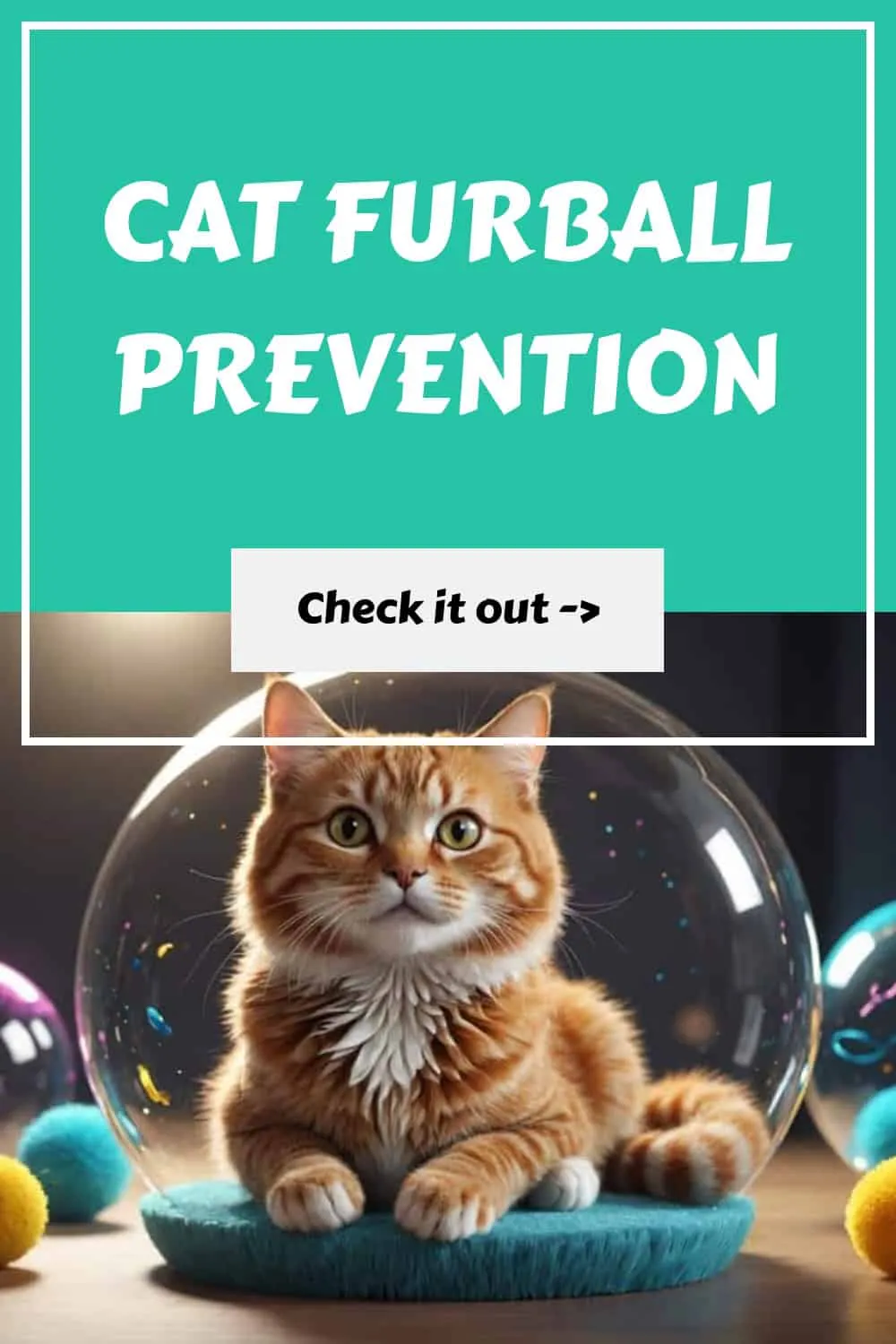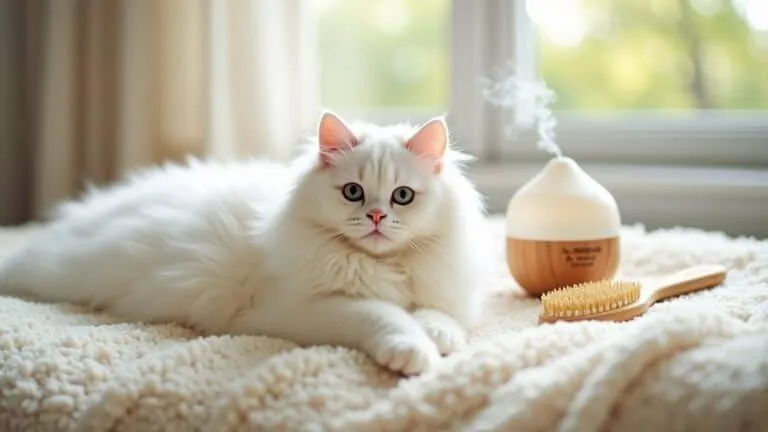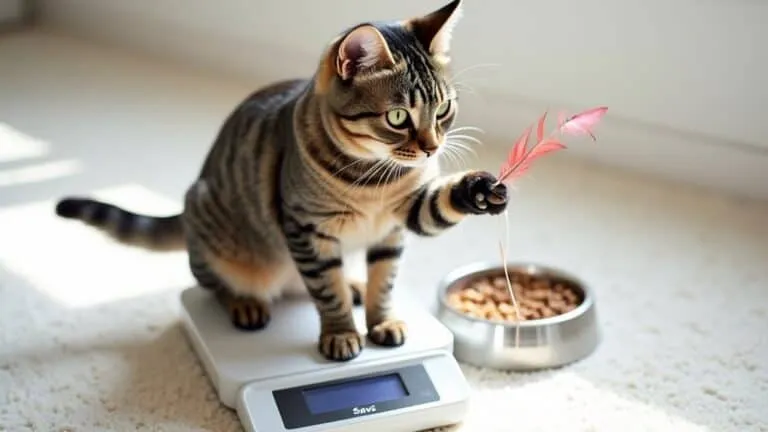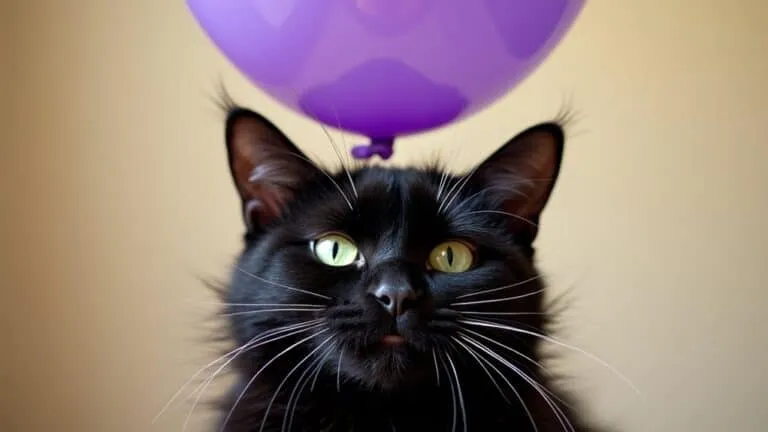The Best Fluffy Pancakes recipe you will fall in love with. Full of tips and tricks to help you make the best pancakes.
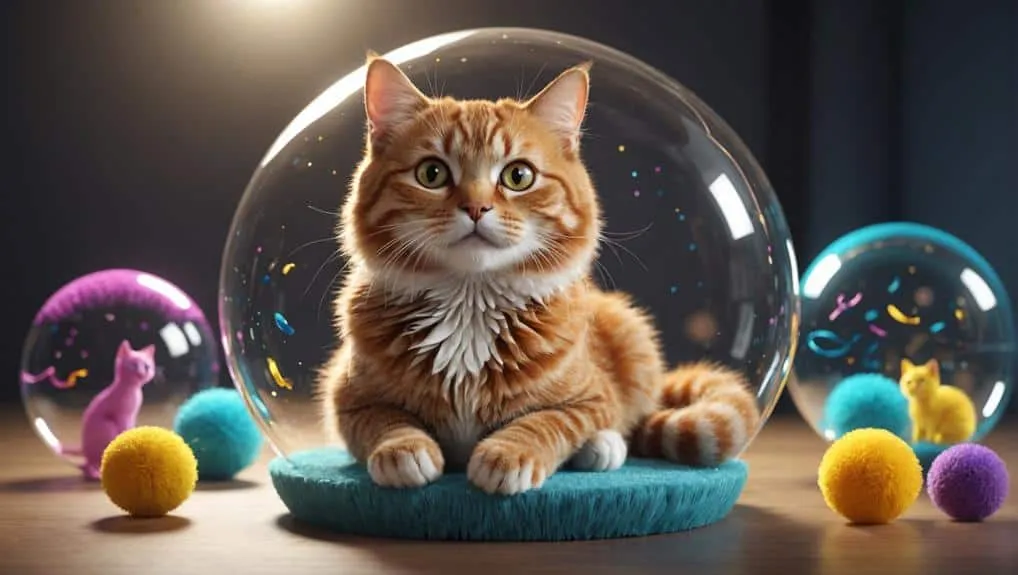
So you want to tackle furball prevention head-on! Hairballs happen when your cat swallows loose hair while grooming, and they're more common during shedding seasons in long-haired breeds.
One way to reduce the risk of furballs is to feed your cat high-fiber food. This helps keep their digestive system in good shape.
Regular grooming is also key, especially for long-haired cats. This helps remove loose hair and reduces the amount they swallow.
Plus, if you provide environmental enrichment, your cat will be less likely to groom excessively.
Make sure your cat always has access to fresh water, too. This helps with hydration and digestive health.
By understanding why furballs happen and using these prevention strategies, you can help keep your cat comfortable and healthy.
Understanding Hairballs in Cats
So, you're watching your cat groom itself, and it's essential to know that this natural behavior can lead to the formation of hairballs, also known as trichobezoars. These can be a threat to your cat's health if you don't manage them properly.
When your cat swallows loose hair during grooming, most of it passes through the digestive system without any issues. However, some hair can become matted and lead to vomiting, which is a sign that a hairball is forming. On average, a cat can produce one to two hairballs per month, but this frequency increases during shedding seasons, especially in long-haired breeds.
Excessive grooming, often a result of stress, boredom, or medical issues, significantly raises the risk of hairball formation and may indicate underlying health problems.
To minimize this risk, it's crucial to promote a healthy digestive system. One way to do this is by feeding your cat high-fiber cat food, which can help reduce the incidence of hairballs by minimizing loose hair ingestion and promoting smoother digestion.
Recognizing Hairball Symptoms
Identifying hairball symptoms in your cat can be done by recognizing specific behaviors and physical changes that often signal the presence of a hairball.
If your cat is making hacking, coughing, or retching sounds, it may be trying to expel a hairball. You might also hear your cat vocalize, crying or howling, during the vomiting process, which indicates distress.
Changes in behavior can also be a sign of hairball problems or complications. If your cat becomes lethargic, loses its appetite, or starts grooming excessively, it could be a sign that there's an issue. If your cat persistently vomits hairballs, loses its appetite, or becomes constipated, it may indicate a gastrointestinal blockage that requires veterinary attention.
Before attempting to expel hairballs, your cat may exhibit discomfort and restlessness, signaling a potential issue related to hair accumulation in the digestive tract.
Preventing Hairball Formation
Preventing hairball formation in your cat is easier than you think. By making a few simple changes to their daily routine, you can significantly reduce the likelihood of hairballs.
Regular grooming is a great place to start. Brush your cat daily if they're a long-haired breed, and weekly if they're short-haired. This will help minimize loose fur and hair ingestion during grooming.
So, what else can you do to prevent hairballs?
First, feed your cat a high-fiber diet. You can either give them specialized hairball formula cat food or add fiber-rich foods like canned pumpkin to their meals. This will promote smoother digestion and help hair pass through their system more easily.
Next, encourage your cat to play and stay hydrated. Engage them in play and provide environmental enrichment to reduce excessive grooming behaviors. Also, make sure they always have access to fresh water. This will help keep them hydrated and support their overall digestive health.
Managing Hairball Complications
Recognizing the signs of hairball complications is crucial because they can quickly turn into severe health risks if you don't catch them in time. If your cat is vomiting persistently, seems lethargic, or is retching without bringing anything up, you need to take them to the vet right away. These symptoms can indicate a hairball blockage, which is a serious issue.
Keep an eye out for other warning signs too, like constipation, loss of appetite, or changes in behavior or energy levels. These can also signal that something is wrong.
Monitoring your cat's grooming habits and hairball issues regularly is key to minimizing the risk of complications. By keeping a close eye on your cat, you can detect potential problems early and get them to the vet quickly if needed.
If your cat has recurring hairball issues, you should also get them checked for underlying gastrointestinal (GI) conditions. These can make hairballs worse and lead to more complications.
Effective Hairball Remedies
If your cat is dealing with hairballs, don't worry – there are several effective remedies that can help. These remedies can be used along with preventative measures to ensure your pet's digestive health is on track.
One option is to use hairball products like lubricants and gels. These can be found at pet stores or veterinary offices and help hair pass through the digestive tract more easily, reducing the formation of hairballs.
Another approach is to make some dietary changes. For instance, feeding your cat a high-fiber diet or adding pumpkin puree to their meals can help reduce hairballs. This is because high fiber content aids digestion and prevents hair from accumulating in the stomach.
You can also try some home remedies. Adding a small amount of olive oil or low-fiber pumpkin puree to your cat's meals can support smoother digestion and reduce hairball occurrences.
Before introducing any over-the-counter remedies or supplements, though, be sure to consult with a veterinarian. They can confirm whether these remedies are safe and effective for your specific cat.
Frequently Asked Questions
What Can I Give My Cat to Prevent Hairballs?
So you want to know how to prevent hairballs in your feline friend? Well, there are a few things you can try.
First, you can add some dietary fibers to their food. Psyllium or pumpkin puree can work wonders in helping their digestive system process all that fur they swallow while grooming.
Regular brushing and grooming are also super important. Not only will it reduce the amount of loose hair your cat swallows, but it'll also help strengthen your bond with them.
Make sure your cat is drinking enough water, too. Ideal hydration levels will help their body pass through any hair that does get swallowed.
If you want to try some more natural remedies, fish oil or special cat treats might do the trick. And don't forget to manage stress and environmental factors that could be contributing to hairballs in the first place.
What Do Vets Recommend for Hairballs?
So, what's the best way to deal with hairballs in your cat?
Vets agree that a combination of good grooming habits, dietary changes, and adequate hydration is key to preventing hairballs. For instance, they suggest feeding your cat high-fiber foods, keeping an eye on fat content, and using products specifically designed to combat hairballs.
But here's the thing: every cat is different, and what works for one might not work for another. That's why vets also consider factors like breed, lifestyle (indoor or outdoor), and any underlying medical conditions when giving advice on how to prevent hairballs.
Why Does My Cat Keep Getting Hairballs?
So, you're wondering why your cat keeps getting hairballs? Well, it's probably because of how they groom themselves. You see, when cats lick their fur, they swallow some of it, and that can lead to hairballs.
Some breeds, especially the long-haired ones, are more prone to this issue. Also, seasonal shedding can make matters worse. Another possible reason is that your cat's diet might be lacking in fiber, which can contribute to the problem.
But that's not all – stress, not drinking enough water, and age can all make things worse. So, if you want to reduce the frequency of hairballs in your cat, you might want to look into these factors and see what changes you can make.
What Dissolves Hairballs?
So you want to know what dissolves hairballs? Well, it turns out there are a few natural solutions that can help. For instance, coconut oil and fiber-rich diets can make a big difference. But did you know that enzymatic formulas and gelatin options can also dissolve those pesky hairballs?
It's also important to remember that hydration plays a key role in preventing hairballs from forming in the first place. And let's not forget about good grooming techniques – regular brushing can really help reduce the amount of loose hair that can lead to hairballs. Of course, if your pet is experiencing frequent hairballs, it's always a good idea to consult with your vet to rule out any underlying health issues.
Final Thoughts
So you've taken the first step in keeping your feline friend healthy by understanding hairballs in cats. Now that you know what they are, it's time to take action.
Recognizing the symptoms is crucial. By doing so, you can prevent hairball formation and manage any complications that might arise. It's all about being vigilant and making adjustments to your cat's diet and grooming routine as needed.
With these effective remedies, you'll be able to minimize the risk of hairballs and keep your cat happy and healthy.

